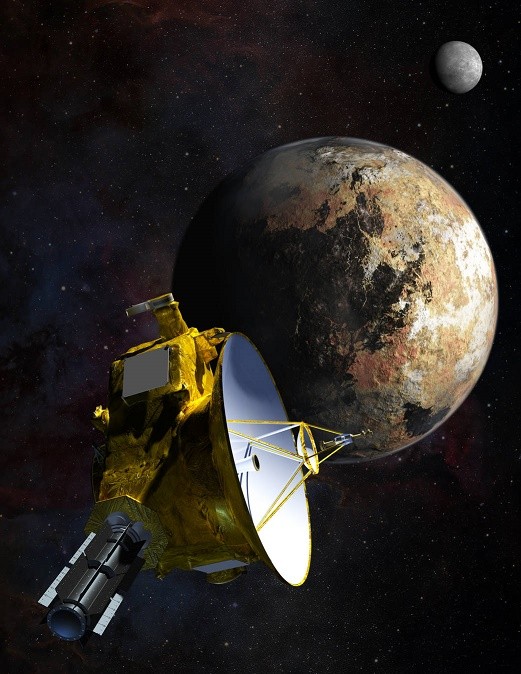NASA's New Horizons spacecraft lost contact for more than an hour on Saturday, July 4 just before its milestone rendezvous with Pluto. This is the first time that a probe will visit the dwarf planet where it travelled across deep space for almost 10 years.
The glitch that occurred this weekend was detected by mission control at 1:54 P.M. EDT however, communications returned at 3:15 P.M. EDT on the same day.
According to the New Horizons team, the autonomous autopilot onboard the spacecraft detected a problem where it immediately switched from the main computer to its backup since it is programmed to do so upon situations like this. The team however, confirms that the spacecraft is in good health.
This autopilot then switched the spacecraft into safe mode where it sent commands to its backup computer in order to restore communications and initiate contact with Earth. After this, New Horizons automatically sent data from its telemetry readings for engineers to pinpoint the emerging technical problem.
NASA's New Horizons anomaly review board members are now carrying out an investigation in order to to get the probe out of its safe mode to its regular programmed speed towards Pluto.
New Horizons mission officials reveal that this recovery process can take up to almost 1 week since data transmissions and commands can take 4.5 hours to travel to the spacecraft since it is almost 3 billion miles away from Earth.
NASA also reveals that New Horizons will be unable to collect scientific data during that time on a temporary basis however status updates will be released when new information from the craft is already at hand.
Launched in January 2006, the US $700 million mission will focus on conducting the first ever scientific investigation of Pluto with unprecedented views of the dwarf planet including its moon system. This July 14, the probe will finally carry out its first ever flyby at a distance of 7,800 miles.
Latest data and series of images captured by New Horizons reveal the complex and diverse surface features of Pluto which shows the two different "faces" of Pluto, pockmarked with darker patches near its equatorial region.
The images from New Horizons also revealed the first colored views of Pluto and its moon Charon where Pluto appears like a paler Mars and Charon looks similar to our own moon.



























